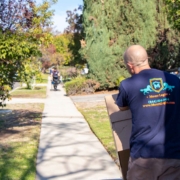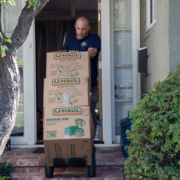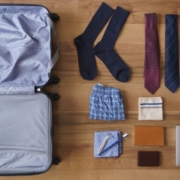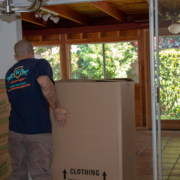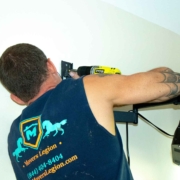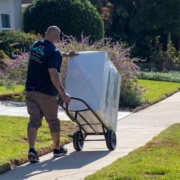Mastering the Art of Long-Distance Moving: Your Ultimate Guide
Mastering the Art of Long-Distance Moving: Moving is often a significant life event, filled with excitement and anticipation. However, when your move involves crossing state lines or covering hundreds of miles, it can also be an overwhelming task. Long-distance moving is a unique endeavor that requires careful planning, preparation, and execution. In this comprehensive guide, we’ll explore the art of long-distance moving, offering you valuable insights to ensure a smooth transition to your new home.
Mastering the Art of Long-Distance Moving:
Long-distance moving typically refers to relocations that involve moving beyond state lines, sometimes even across the country. This type of move presents its challenges, but with the right approach, it can be a manageable and successful endeavor.
Key Aspects to Consider:
- Planning: The success of a long-distance move hinges on meticulous planning. Start planning as early as possible, create a checklist, and establish a timeline.
- Budget: Long-distance moves can be costly, so create a budget that encompasses all your expenses, including packing, transportation, and any unforeseen costs.
- Choosing a Moving Company: Selecting a reputable moving company is crucial. Research and obtain quotes from various moving companies to find one that best suits your needs and budget.
- Packing and Organization: Efficient packing is vital for a long-distance move. Invest in quality packing materials, and consider decluttering to minimize your load.
- Transportation: Your choice of transportation will depend on your budget and the volume of items you’re moving. Common options include renting a moving truck, using a shipping container, or hiring a professional moving service.
- Legal and Regulatory Considerations: Understand the legal and regulatory requirements for long-distance moves. This includes researching state-specific moving regulations, permits, and any documentation required for your new location.
The Benefits of Hiring a Professional Moving Service:
Long-distance moves, in particular, can be significantly eased by hiring a professional moving service. Here’s why:
- Experience: Professional movers have extensive experience in executing long-distance moves efficiently.
- Logistics: They can handle all aspects of your move, including packing, loading, transport, and unloading, streamlining the process.
- Efficiency: Movers are equipped with the right tools, materials, and vehicles to ensure your belongings are transported safely and securely.
- Peace of Mind: Knowing your possessions are in the hands of experts can alleviate the stress associated with long-distance moving.
Cheap Movers Costa Mesa: Your Trusted Long-Distance Moving Partner
When you’re planning a long-distance move, having a reliable moving partner is essential. Cheap Movers Costa Mesa is your solution for long-distance moves, offering:
- Affordability: They understand the importance of a budget, offering competitive rates for their services.
- Professionalism: With a skilled team and the latest equipment, they ensure the highest standards of service.
- Reliability: Your peace of mind is their priority, providing secure and on-time delivery.
Long-distance moving may seem like a complex task, but with the right planning and the assistance of a trusted moving company like Cheap Movers Costa Mesa, your journey to a new home can be a smooth and enjoyable experience. Trust in their expertise and let your long-distance adventure begin without worry.
GET A FREE-PRICE OFFER RIGHT NOW.

